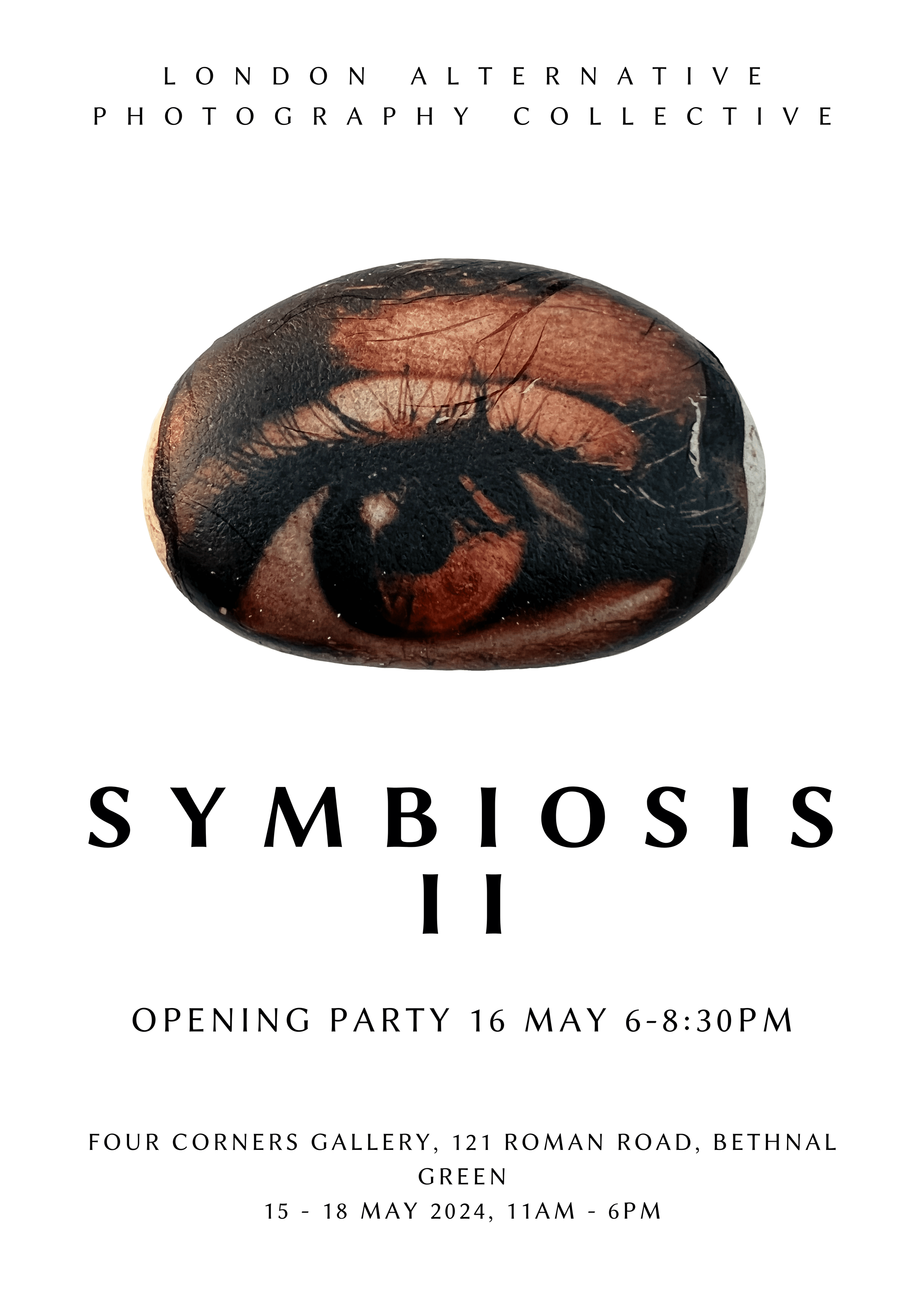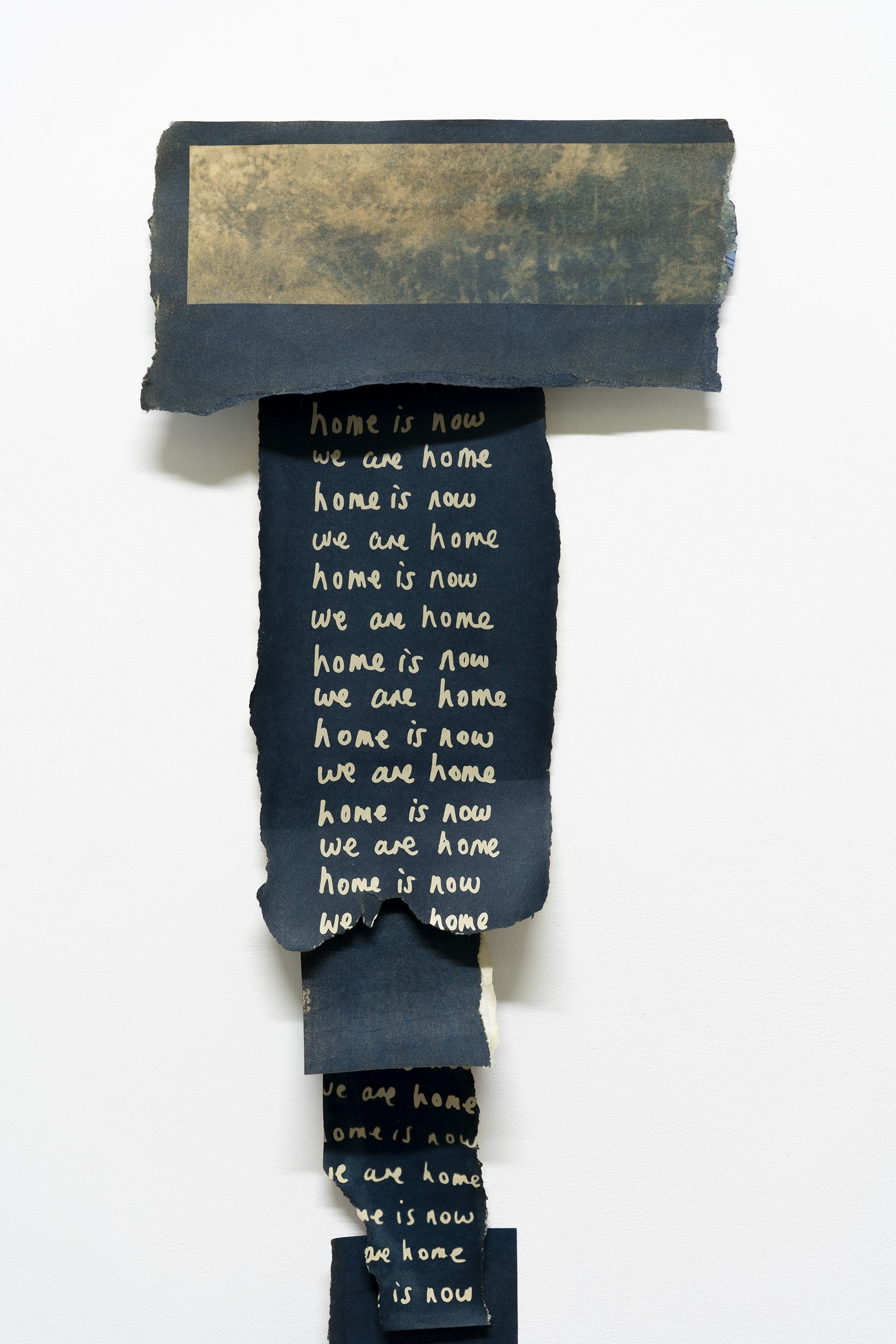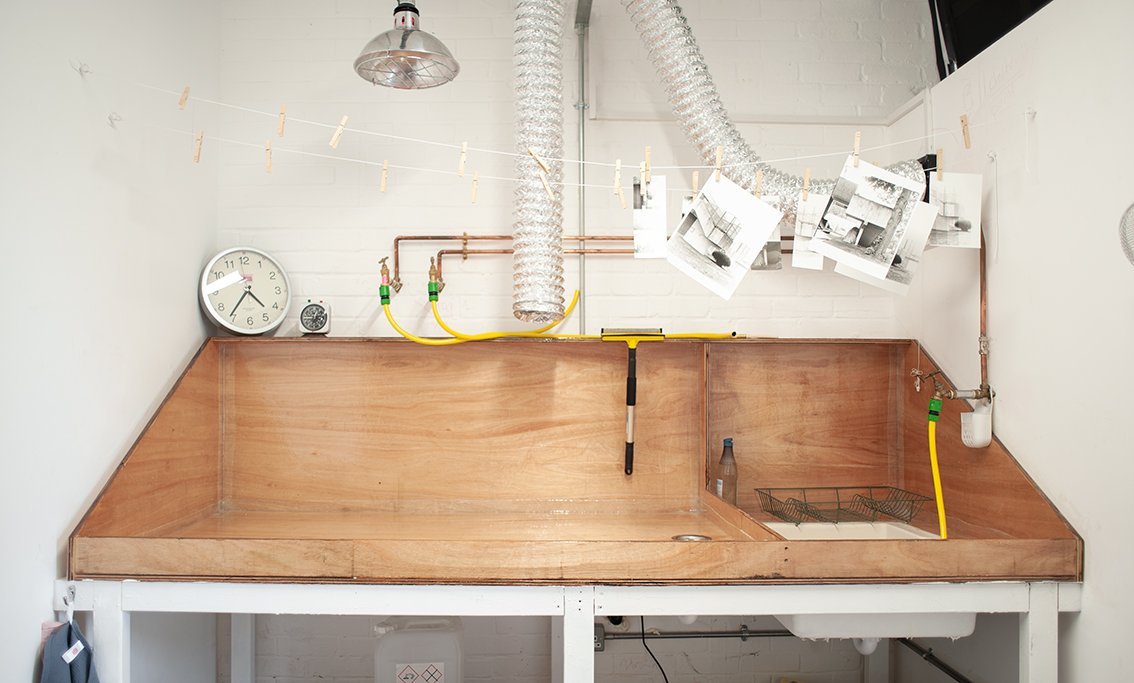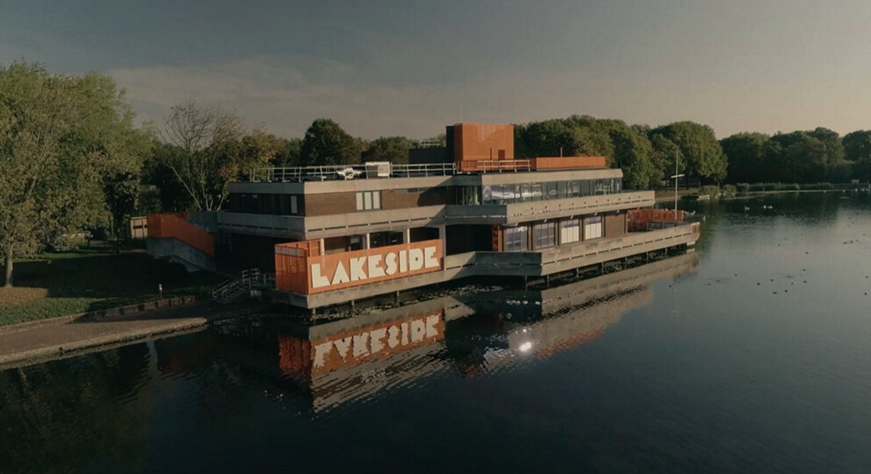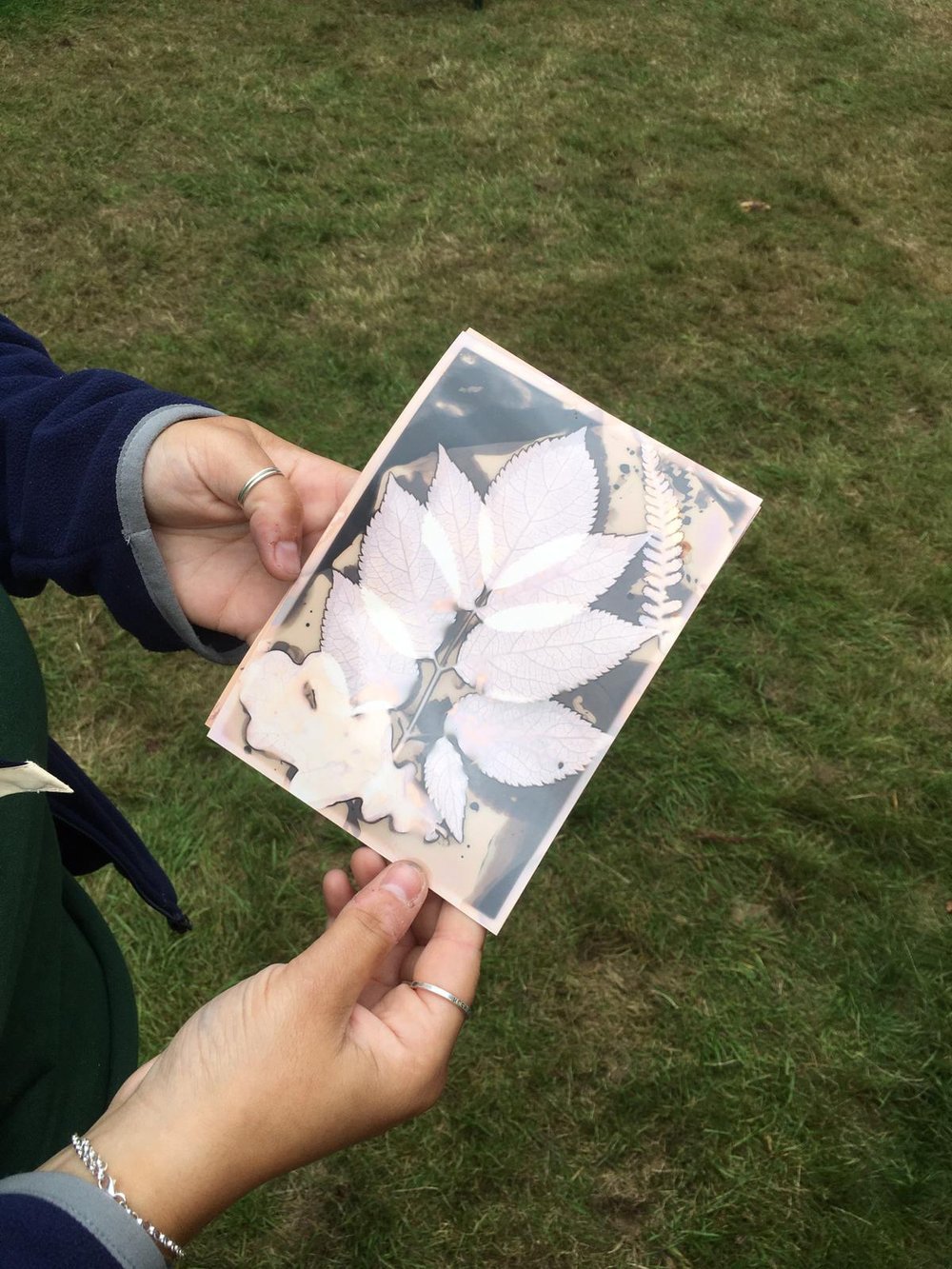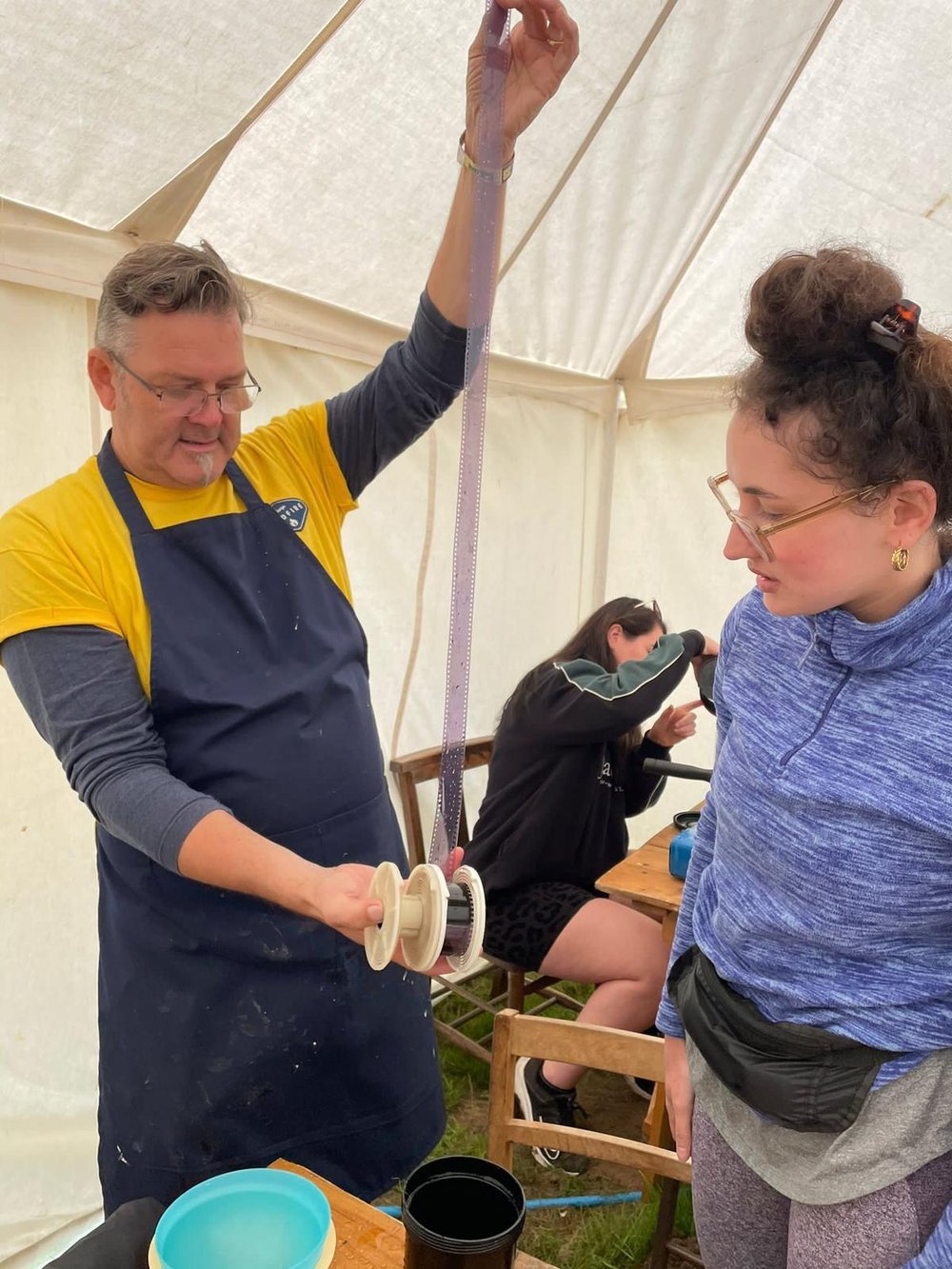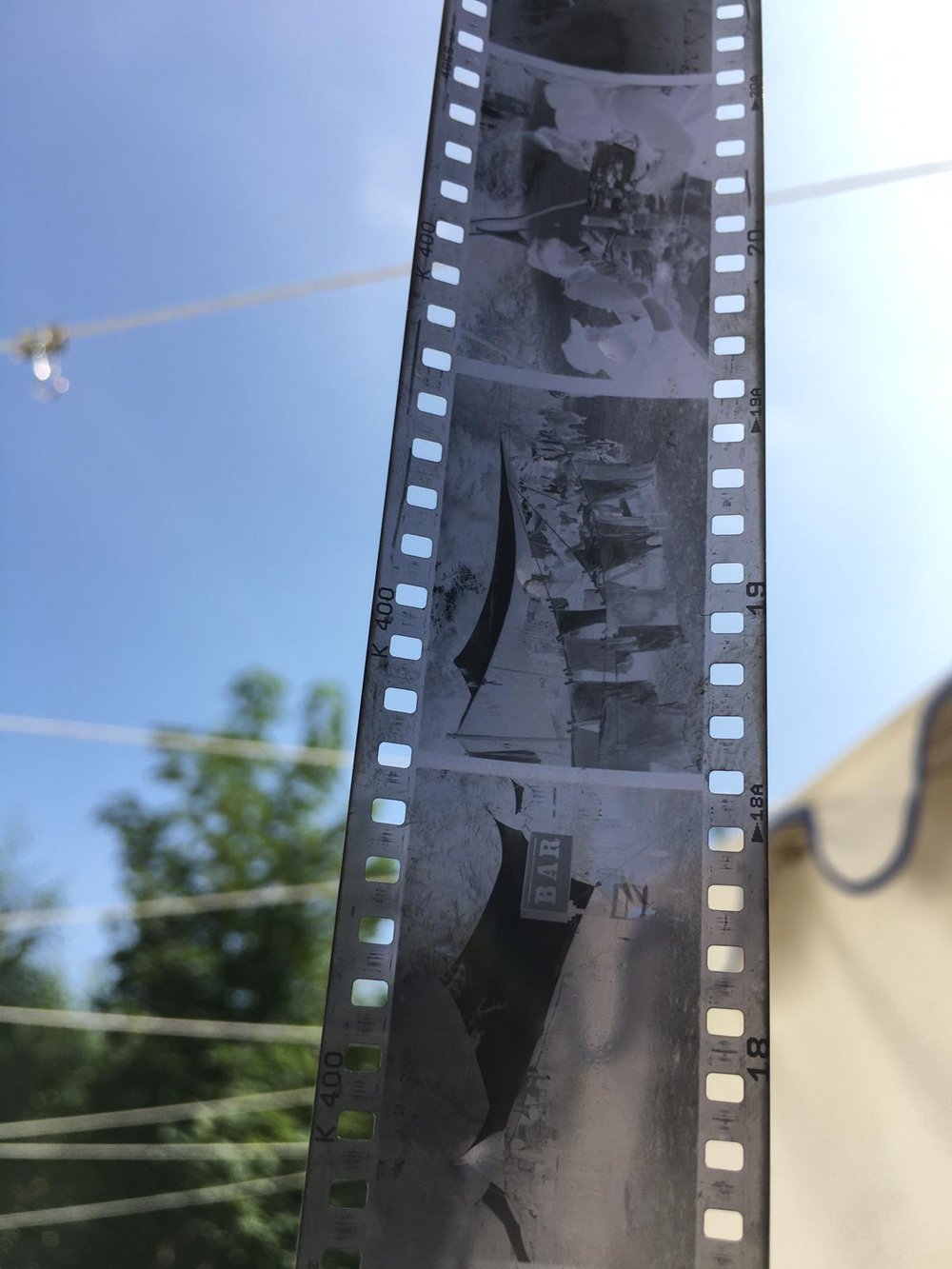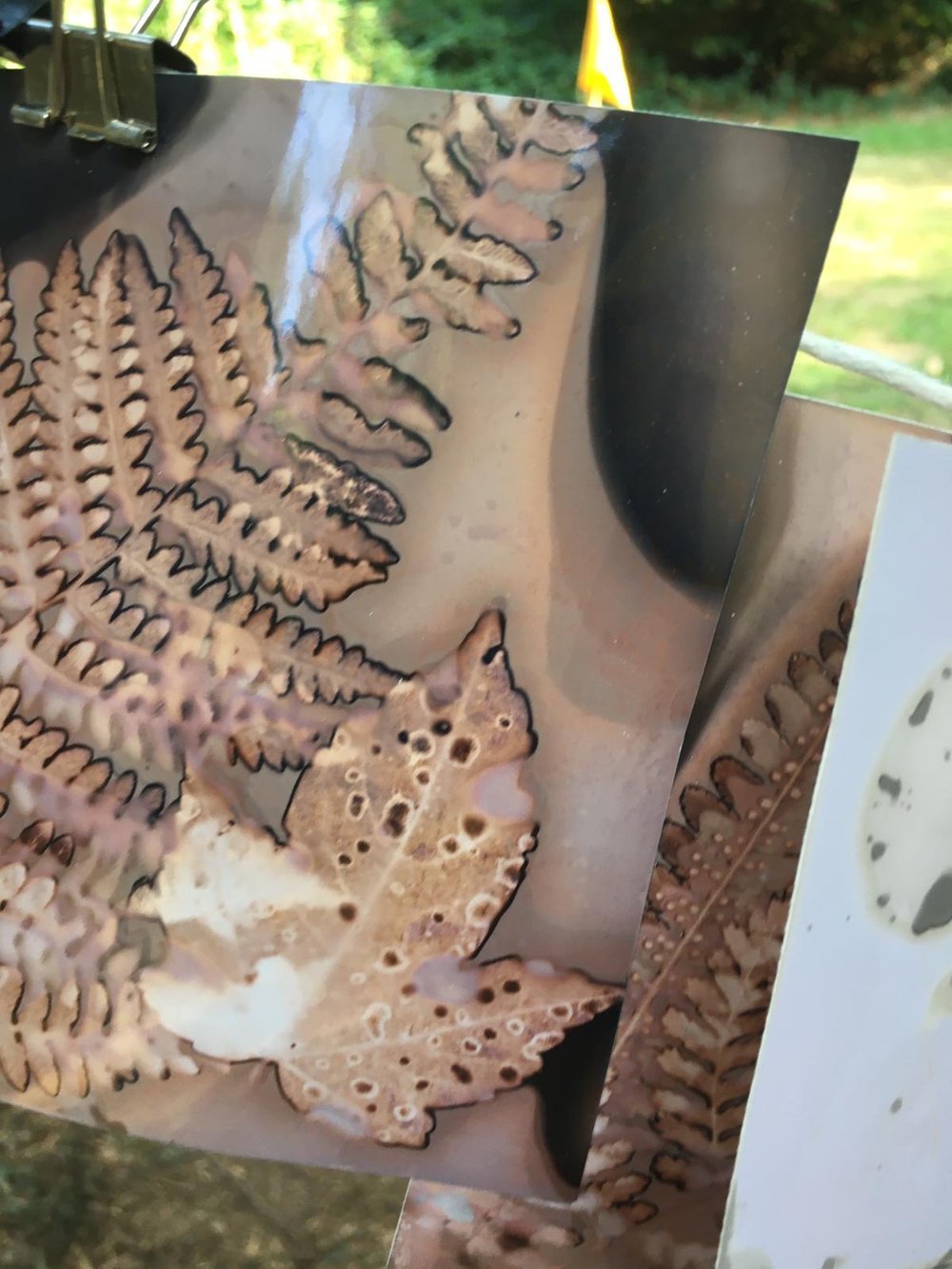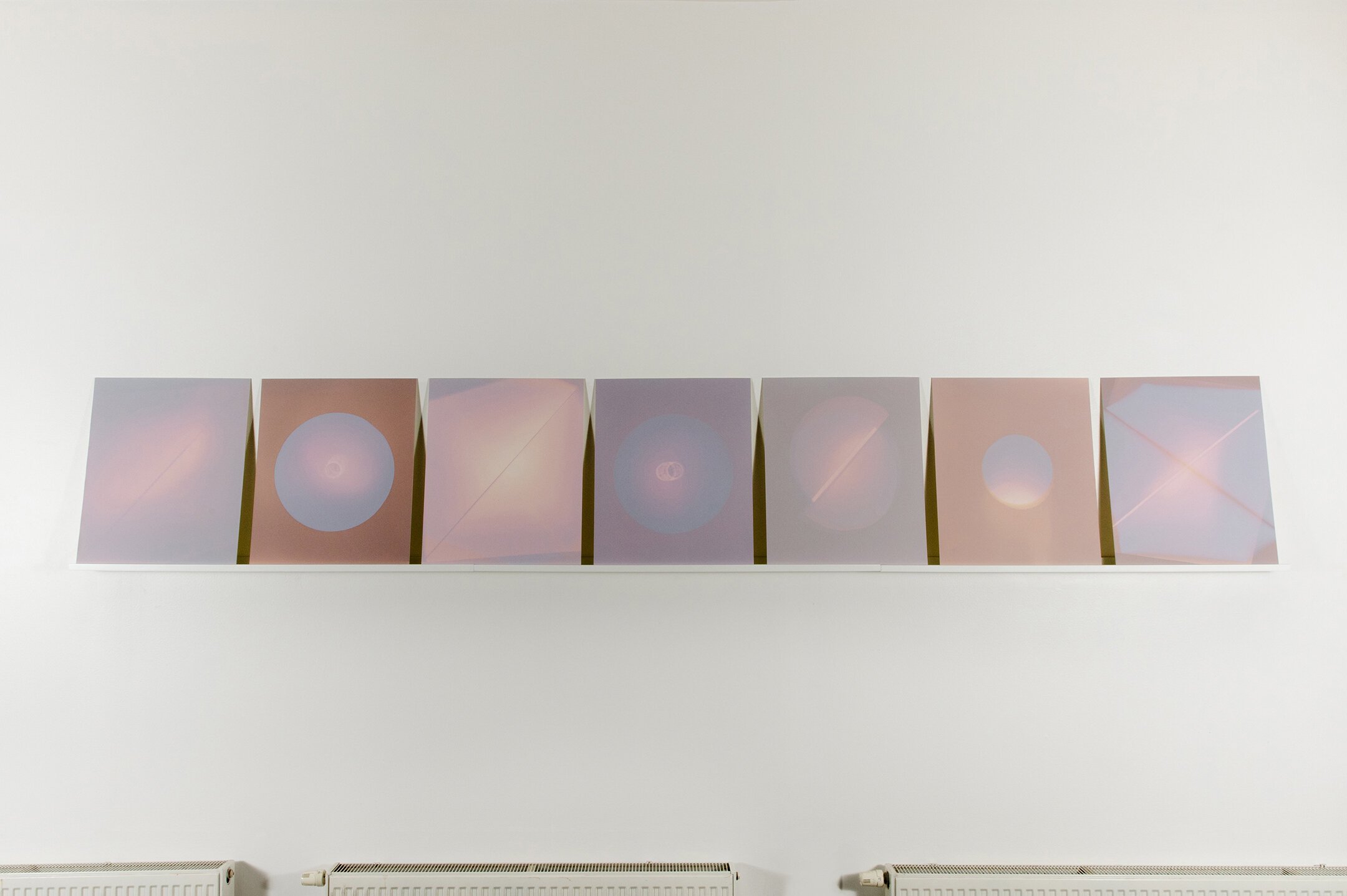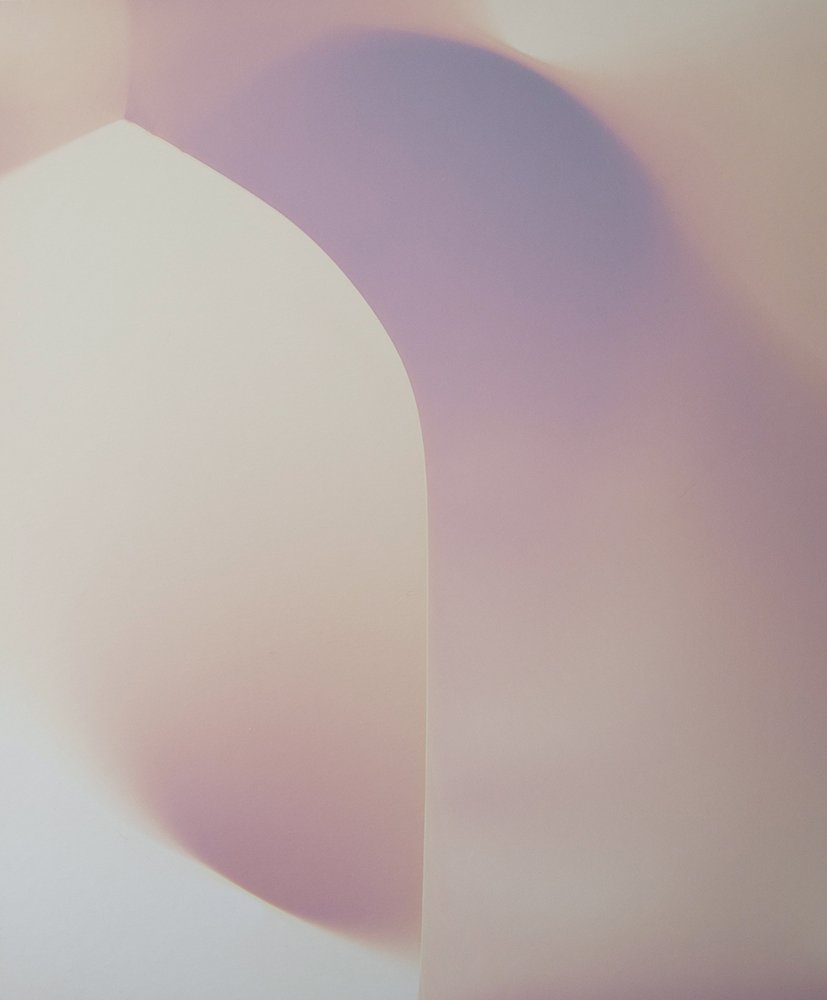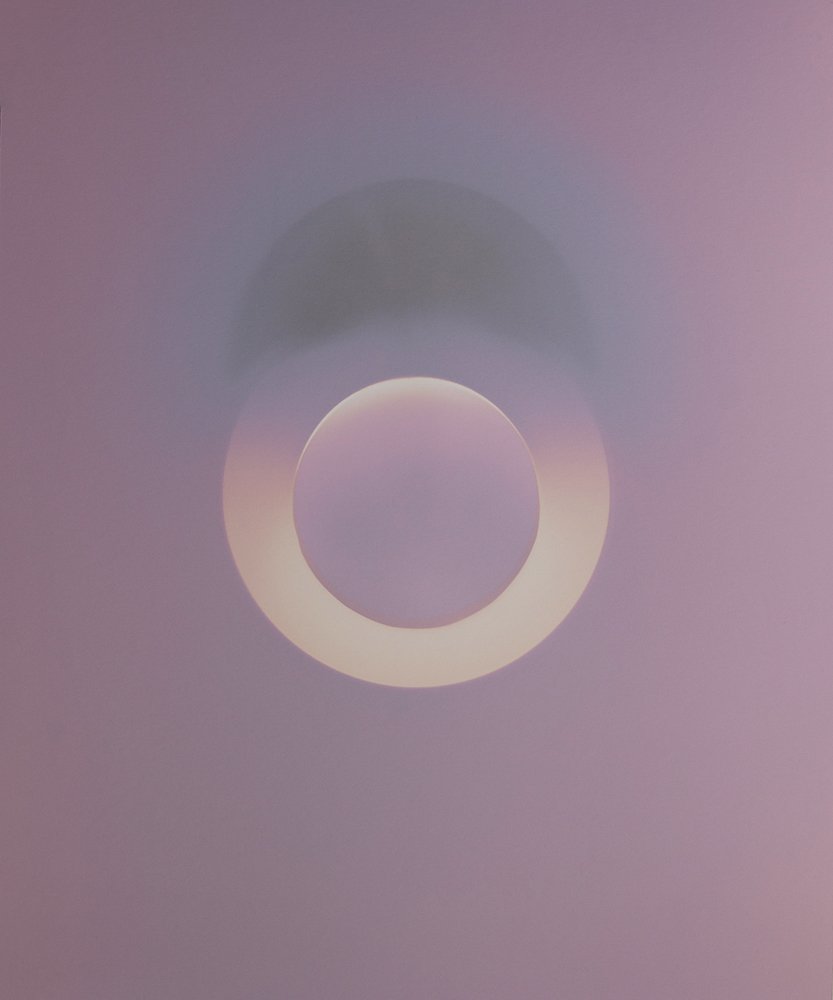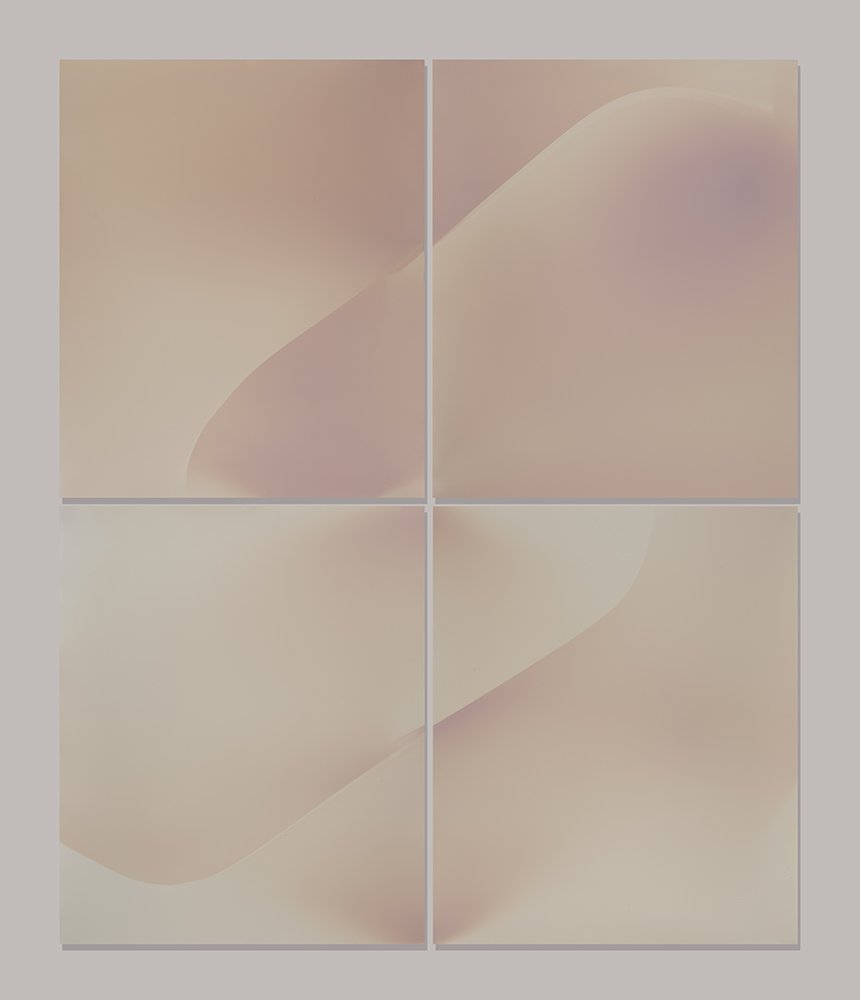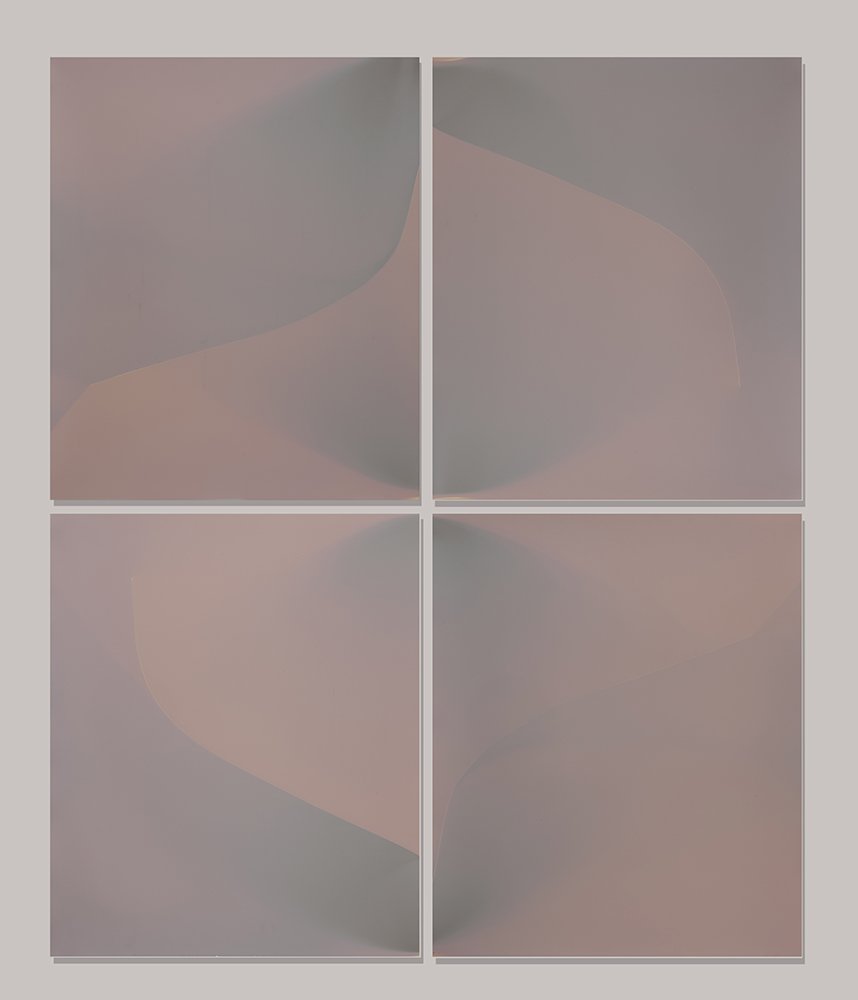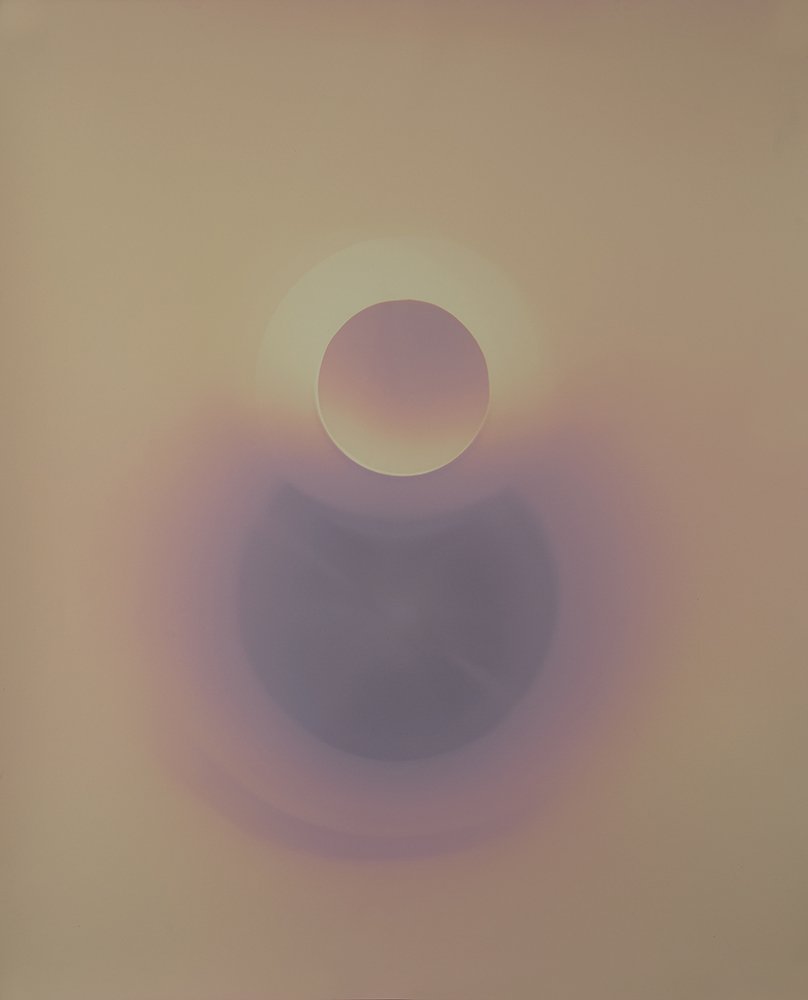Venue: Equivalentbehaviour Space // Tokoro Studio, N15 4QL London // August 15–26, 2024
Dates:
Opening Reception: Thursday, August 15, 5-9PM
Conversation with Rachelle Bussières and Melanie King: Sunday, August 18, 4PM
Gong Bath with Agata Kik // Martyn Riley: Sunday, August 18, 6PM
Supported by Canada Council for the Arts
The relation between what we see and what we know is never settled. Each evening we see the sun set. We know that the earth is turning away from it. Yet the knowledge, the explanation, never quite fits the sight.
— John Berger, Ways of Seeing (1972)
The technique of lumen printing is an art of errors, a softly anarchist twisting of a thing’s destiny. Gelatin silver paper, intended for recording black-and-white photographs, is instead left brightly toned — undeveloped — and stabilized with fixer in order to retain its array of pinks, violets, pastels, and dull yellows. This hybrid form glows; it exists in a space between photography and painted canvas, document and pure form.
Bussières’ photograms are made in the tradition of earlier photographs by Man Ray and László Moholy-Nagy who captured the shadows of material objects resting directly against photographic paper. Bussières’ images have typically been composed from natural and artificial light sources reflected by curved metal tools which trace precise geometries onto the photogram, redirecting light like a material thing: receiving it, channeling it, and guiding its various spectral effects. Much like the Suprematist forms of Kazimir Malevich, she is drawn to repetition, reiterating circular and orbital forms in reference to astrological phenomena. Many of her photo prints take the form of glancing ellipses, vectors passing by like comets, and the momentary alignment of planetary bodies preceding a conjunction or eclipse.
Air Index builds upon Bussières’ previous series of works, bridging photography’s documentary intent as an instrument for recording the visible with its distinct materiality as a painterly substrate sensitive to the fluctuations of light and time.
As days cycle and seasons elapse, photographic paper invariably absorbs the visible spectrum of light given to it, shifting, staining, and embedding chemical transformations within its alchemical surface. The variations in tonality and color within each photograph record a vast array of atmospheric conditions, too many to pin to any particular time of day or weather event, yet noticeably marked by the oscillations and disturbances experienced over the course of the exposure.
Here, the indexicality of the photographic process in which light-sensitive chemistry is materially marked by the impact of photons becomes a secondary index of the air itself: the dichotomous imprint of humid/torrid, fluctuating/invariable, and pellucid/obscure moments of atmospheric conditions made visible. During this past winter, spring, and summer, Bussières, based in New York City, corresponded with twenty-five artists from various locales to coordinate the prints collected at Equivalentbehaviour Space. Each photographer exposed a few sheets of gelatin silver paper to their local light, allowing it to become suffused with the radiance, atmospheric flux, and impurities of their environment. An excess of light can inhibit a clear view; it can dazzle and blind. But here, the point is not to see; it is a matter of receiving this light itself. These saturated photograms, in which the blinding brightness of the world permeates the photogram, show what is often hidden in the standard photographic image. The invisible matter enveloping our lives makes itself visible.
A series of unfixed photographic works titled Wind Prints accentuates the temporal nature of the photograph, which begins to reproduce an image immediately upon contact with light. By exposing the prints in a lit studio rather than the enclosed space of a darkroom, and by rolling the paper into a cylinder so that the edges of the print function as an aperture, Bussières creates an elongated camera obscura with an opening at each end. This functions to project slight linear rays of light horizontally across the print. When unrolled, the unfixed prints fade, their incandescence vanishing as a subsequent image forms.
Meanwhile, Bussières’ installation Sky Prints takes the form of a spartan arrangement of rectangles, each unframed printstripped down to a nearly platonic ideal. The minimalist rectangles are exposed to daylight or moonlight, sometimes both, for a specified duration, then bathed in photographic fixer to arrest the process. Colors seep across each photogram in gradients which materialize like the crepuscular staining of the sky at dusk; they absorb the transitory luminescence given to them by the surrounding glow of the physical world. The photograph, a medium dedicated to portrayals of reality, is ill equipped to handle experiences which approach the limits of appearance. The result is nonobjective, subjectless; it seems to show nothing. In actuality, these Sky Prints gaze back through the troposphere and beyond to the vacuum of space, showing us infinity. Much as Cézanne found true of painting, we are offered “an abyss into which the eye sinks.”
In Sky Prints, this encounter between sight and knowledge belies a secondary, material condition of their production. The earth’s atmosphere, in granting light its passage to the surface, alters its properties, scattering photons against particulate matter, carbon-based pollutants, haze from simmering wildfires, volatile organic compounds which bond to form smog, or the early morning emanations of oceanic fog. Beyond this atmospheric scrim, our eyes and meticulous scientific instruments peer toward emptiness; shielded by dense layers of cloud cover and transparent atmosphere, these earthbound photograms ceaselessly record their surroundings, transforming what they find into soft gradient washes of color on gelatin silver paper. Rather than ignore the haze or correct for its presence, Bussières opts to record the totality of these atmospheric vapors and their effects.
Text by Christopher Squier, New York City
The Sky Prints project was made in collaboration with artists from around the globe; Svetlana Bailey (New York), Rachelle Bussières (New York), Robert Canali (San Francisco), Vanessa Cowling (Cape Town), Kate Van Der Drift (New Zealand), Hannah Fletcher (London), Shaina Gates (Kittery), Martha Gray (London), Ramona Guntert (London), Natasha Harrison (Orlando), Daniel Hojnacki (Chicago), Nikolai Ishchuk (London), Constanza Isaza Martinez (London), Thomas Jenkins (London), Tamara Kalo (Beirut), Melanie King (Manchester), Alyssa Minahan (Boston), Sara Minsky (New York), Ng Hui Hsien (Singapore), Yvette Hamilton (Sydney), Armelle Tulunda (Paris), Yann Pocreau (Montréal), Izabela Pluta (Sydney), John Steck Jr. (Baltimore), and Katrina Stamatopoulos (London).
In conjunction with Air Index at Equivalentbehaviour, Melanie King’s installation, Quantum Entanglement Oscillograph, is exhibited at Tokoro Studio. During a residency at the Joint Research Centre, King worked with Constantin 'Costas' Coutsomitros, allowing her to discover how his Quantum Walks Experiment operated. Visiting Costas's laboratory was an incredibly interesting experience, as he was experimenting with technologies that emit very minute electrical activities.
Following her visit to the JRC, she used the data that Costas provided her from the Quantum Walks photon detectors to create an audio file. She used these files to create a Quantum Entanglement Oscillograph. The first oscillograph measures the data connected to the first photon. The second oscillograph represents the other photon, which should also feel the interference of the first data stream. Visually, the oscillographs should look exactly the same, but it is up to the observer to detect any eventual differences. The entangled photons that Costas is working with have far-reaching implications. Theoretically, entangled photons could feel the same interference across the entire universe simultaneously, without the limitations of the speed of light. Thus, the concept of entangled photons has revolutionized our understanding of how the universe works.























































